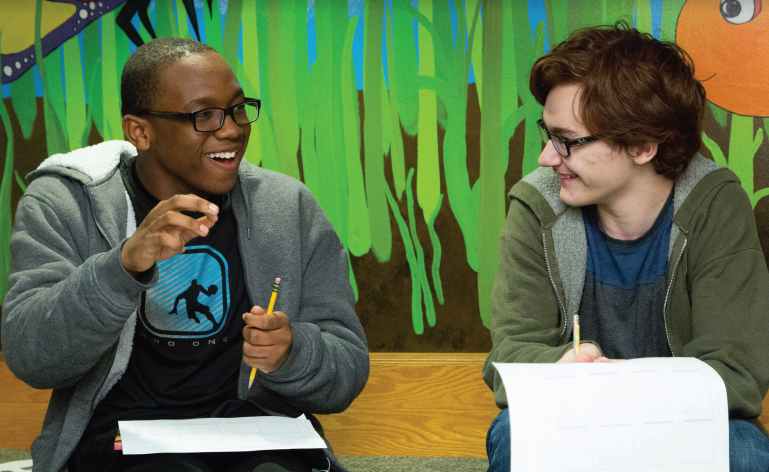Seven Takeaways For Youth-Serving Organizations
1. Center diversity, equity, and inclusion.
Consistent evaluation of TRL and a focus on topical research helped PA Humanities make improvements and increased the impact on Black and Brown youth and youth from economically disadvantaged communities.
2. The humanities support positive youth development.
The depth and breadth of the humanities allow for discovery of subject areas that are relevant to our lives and invite us to think more deeply about our own identities and experiences. They support the development of critical thinking, empathy, and communication skills and prepare youth to be strong, thoughtful, and resilient adults.
3. Organizational leadership should be supportive of youth-driven programming.
An inclusive and equitable youth program puts young people in the driver’s seat. Internal support from library branch managers, executive boards, and school administrators to involve youth in development of their own learning opportunities can give site staff permission to experiment with youth-driven and more collaborative approaches.
4. Ask for and seek out professional development opportunities.
Out of School Time, or OST, programs require an investment in professional development in order to build layered programming that provides a diverse menu of participation options that are accessible to children and youth.
5. Provide opportunities for youth to act.
Civic engagement opportunities can be a game-changer for young people, particularly older youth of color.
6. Prioritize program evaluation.
As organizations begin to offer programs that are culturally relevant, facilitating an assessment and program evaluation is essential for determining the effectiveness of the program and for identifying strengths of the program. The ability to demonstrate the impact of your efforts towards program improvement and the program’s strengths are important for the work you do with youth.
7. Communicate to funders what youth actually need for a quality afterschool experience.
Evaluation can often favor the funders’ needs over the program end-user, meaning that there is a disconnect between what is needed to ensure a quality experience and what is needed to prove return on investment. Educating philanthropic partners and stakeholders, while also building partnerships that prioritize trust building as a part of program delivery, is a necessity.
